Part of a technology coach’s role these days is to convince teachers that their job description has changed. The industrial model of education is well past its expiration date, and the generation of students born today are going to graduate into a world that will look completely different than our own. In order to train 20th century teachers to reach the conceptual understandings required for 21st century education, school leaders and tech coaches need to focus on describing what this could be.
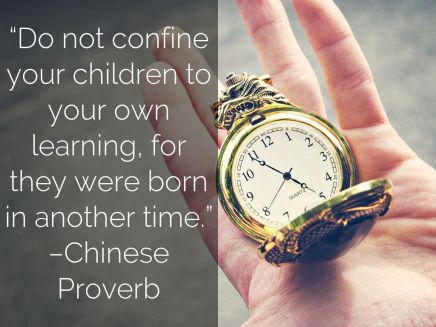
This article tries to describe how I imagine the 21C classroom and I will try to integrate theory on 21C pedagogy throughout. Edutopia’s 10 signs of a 21st century classroom is a good read, as well this tech4learning’s article. To describe the 21st century here, I’ll divide it up into three categories: What can it potentially look like, sound like, and feel like?
What does the 21st Century-Ready Classroom Look Like?
Imagine what the workplace looks like at one of the more hip startups near you. Is it rows of desks and dividing walls? Is everyone sitting in silence? I was surprised to not see Seattle – the city of my university – in the top five on this Fortune list for startup activity in 2016:
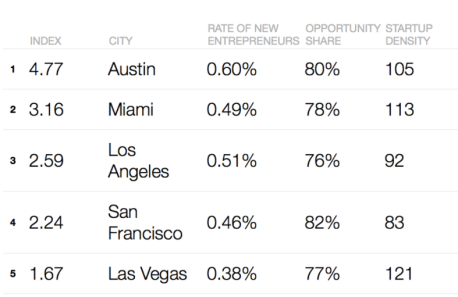
What I picture is couches, colors, and bright lighting that facilitate the collaboration between professionals. I see devices, headsets, and outlets. Take a look at some of the Google campuses that I googled below:


Clearly these two photos have a very contemporary look, but what’s more important is that the space signals to the professionals at work that their knowledge and skills are better harnessed when shared spontaneously and collaboratively. Every part of the space is purpose-built, and there are fewer barriers between inside spaces and outside spaces than what you’d find in a traditional workspace.


In my classroom (above), the setup has changed many times to fit the purpose of the unit, the activity, or the dynamic of the students in my class. We’ve had weeks of free inquiry where students worked without walls, and once we just needed to read and learn in a fort:
What does the 21st Century-Ready Classroom Sound Like?
I’ve talked before about how noisy classrooms are overrated in my article on growing up the child of a Deaf mom and teacher. My Twitter Feed is always full of teachers and administrators professing a “new” messy and noisy style of learning. Now, while my classroom will become extremely loud when they put on a cardboard arcade with coded games, or a in the heat of a good debate, you can also find my entire class sitting around with headphones while diligently completing a project.

Take a look at the photo above. These “custom implant organ designers”, one of the newest jobs popping up in the world our children are graduating into, are all working mostly in silence. However, there are multiple points of contact for face-to-face interaction; They are not limited in their ability to turn and interact with one another. The point is that sometimes students need quiet time to think, and other times, they just need to dump ice on each other and figure out how things freeze (see below). There are many ways to learn, and it is a teacher’s job to figure out the pedagogy that best matches the circumstance.

Is my class loud? Sometimes. When they are quiet, is it because I have demanded compliance and they are passively listening to me? Not usually. Perhaps they are fully concentrating as they practice something, or are preparing in silence to teach others. It might be because they are writing, or communicating with others on social media or in our online courseroom, and the language-use is intense, but not loud.
What does the 21st Century-Ready Classroom Feel Like?

It’s time to face the facts that many of the jobs of today will be gone tomorrow (See: 15 jobs that will be gone in 10 years) – this is just the way of the world. According to some, 47 percent of jobs will disappear over the next 25 years. Computers will simply be able to do things more cheaply and effectively than humans.
The students of today will be designing those computers. This is why, in the classroom of the 21st century, technology should feel ubiquitous; It is just as much a part of learning as pencil and paper and it is omnipresent. I constantly work to hone my technology skills (on my couch while watching T.V.), and I fully embrace the technology that I have available at my school.
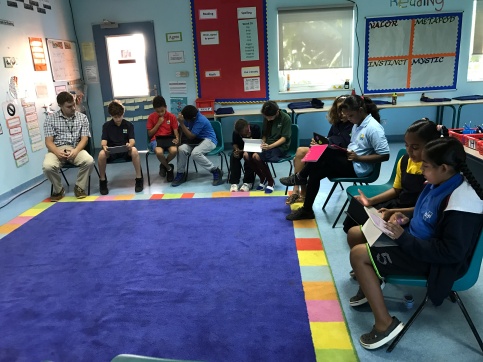
The 21st century-ready classroom feels democratic, and behaves much like a democracy. 21st century skills (see below) cannot be developed in an entirely top-down, authoritarian environment. I don’t imagine that the workplace of the future will behave that way either – remember which jobs are disappearing, and which are being created.
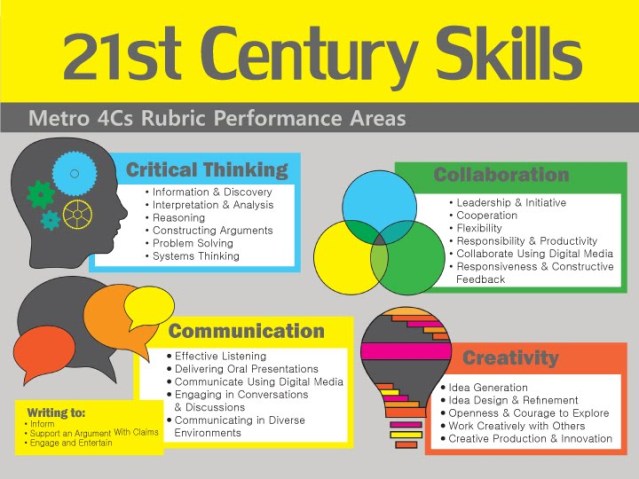
Companies today want our kids to graduate having mastered the 4Cs of critical thinking, collaboration, communication, and creativity. A child should feel like their ideas matter in their classroom, much like a professional should feel valued for their ideas in the workplace of the future. It is important to give your class back to your students so that they gain the necessary confidence and perseverance to pursue and communicate their ideas when they enter their future careers. If it were up to me, I’d make it a school-wide rule that every child should have access to snacks, drinks, and bathrooms and should be able to choose their clothes. But alas, that sounds like a whole ‘nother article.
I hope you enjoyed my thoughts and links that try to describe the 21st century classroom. Be sure to follow me on Twitter, check out more about us, and keep coming back to educationrickshaw.com for more teaching ideas in motion.

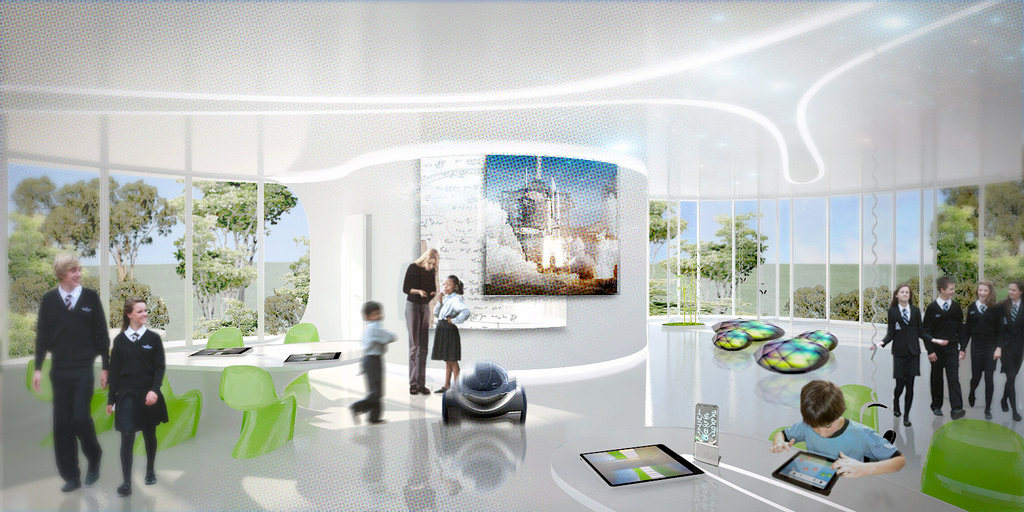

A lot of food for thought here. Sometimes teachers do confine children to their own learning. It’s hard not to do, for it is what you know and what has got you to where you are. Teachers should be open to new ways of doing things, as a first step to at least try. I really enjoyed your post, some interesting statistics, too.
LikeLiked by 1 person
Thanks for the comment. Yes, it’s hard to push for change and to know what that change is when we are all informed by our past experiences!
LikeLiked by 1 person
Wow! What a fascinating post. I’d love to be involved in a classroom like these. Those 4Cs are super important.
LikeLiked by 1 person
Thanks, Norah… yes I’m thinking a lot about these things as I move back to Sudan and start teaching again!
LikeLiked by 1 person
Fantastic stuff! You’ve definitely got me re-thinking my future classroom space, lesson ideas and how I teach on a whole. Now I’m really wondering….. Am I really giving my best to students? I talk about 21st century skills and learning all the time when I deliver CPD to teachers in my schools. New vision for thought. Thank you so much for sharing.
LikeLiked by 1 person
I appreciate the visit and your comment! Keep up the good work – it sounds like we’re working towards many of the same goals 🙂
LikeLike
Thanks for the followed, always great to be connected with a positive minds.
Blessing to you.
LikeLiked by 1 person
Thanks so much for the visit!
LikeLiked by 1 person
You are most welcome!
LikeLiked by 1 person
Thanks for a great article. I “flipped” from the traditional mainly one way communication classroom 20 years ago. And yes, I was a bit afraid of the noisy and messy classroom my older colleagues claimed was inevitable when I gave away Control.
My experience With the ICT supported Learning environment – when well planned and implemented – it was and is almost eerily quiet, With all the students busy interacting online or going togehter F2F in a corner to discuss quietly how to solve a problem before returning to their computers.
I have added a link to Your article from my teaching and Learning blog. i hope it is ok.
https://eteachingandlearning.wordpress.com/e-pedagogy/choose-approach/
LikeLiked by 1 person
Love it! Thanks for the visit!
LikeLike
Reblogged this on Reimagining the iTaukei and commented:
Love this entry!
LikeLiked by 1 person
Thanks 🙂
LikeLike
We need to keep the perspective that conceptual learning is necessary too, so that we understand the studies we venture into. So there needs to be a balnce between conceptual learning, with measurements ising stsndards based assessment, and Competency Based Learning in which we develop and measure the improvement of capabilities and competencies. To do this there is grater need for professional learning and development for teachers and much better communication to students and parents about expectations and learning objectives.
LikeLike
I’ve enjoyed reading your many excellent articles! Thank you for sharing your ideas. I agree with you on nearly everything. The big exception is the pyramid you show above (percentages of how learning best occurs). This graph has been thoroughly debunked and should not be circulated anymore. Please check into it.
LikeLike
Hi, your pyramid (“10% of what is seen….) has been used erroneously for years. Anyone who refers to it without first checking the source — long debunked — unfortunately outs him/herself as a poor researcher. That’s not to detract from the vaIidity of the rest of your message, though.
LikeLike
You’re right. This post is old, at least in comparison to the learning that I’ve done so far. I’m not sure what to do with older posts that have conflicting messages to newer stuff that I’ve posted. Archive? Delete? Change?
Anyway, for this post I’ve decided to delete the retention pyramid.
LikeLike
I blog frequently and I genuinely appreciate your content.
This article has really peaked my interest. I will take a note of
your site and keep checking for new details about once per week.
I opted in for your Feed too.
LikeLiked by 1 person
It’s hard to come by educated people in this particular topic, however, you seem like you know what you’re talking about!
Thanks
LikeLike